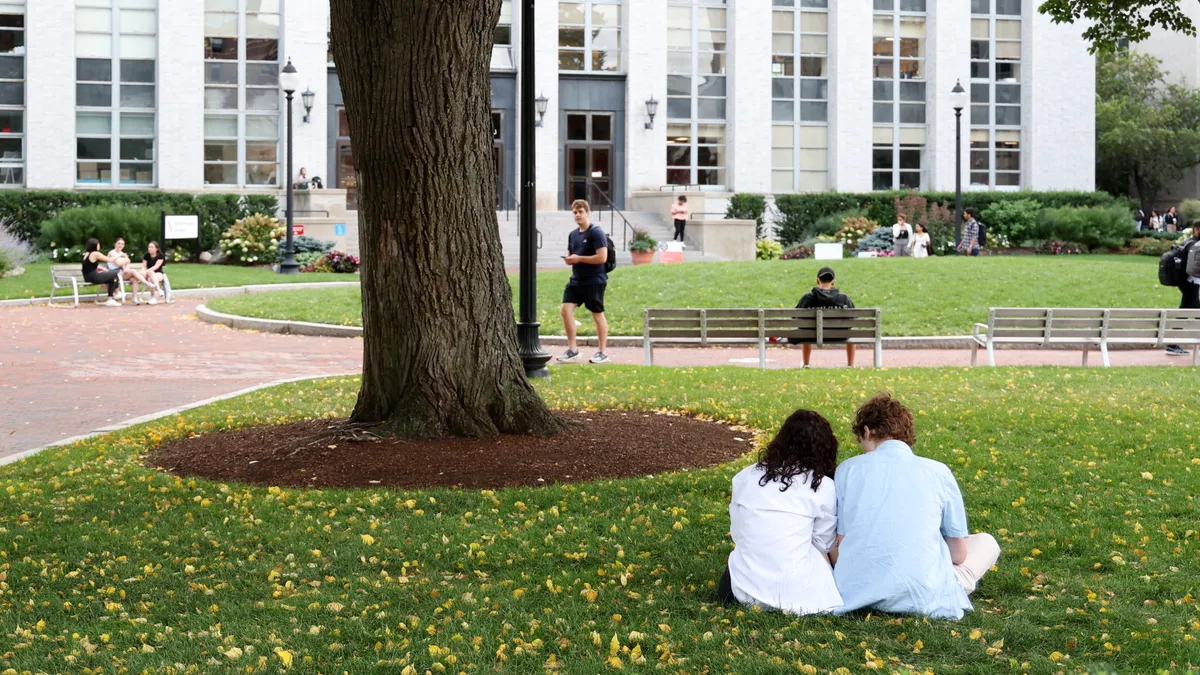Enrollment in U.S. higher education institutions is down yet again, declining by 1.1% for fall 2022 from the year before. Decreases came across all types of institutions, including community colleges, public universities and for-profit schools.
But the topline figure hides some interesting enrollment trends at play this fall. For instance, while community colleges still saw a slight decline, it’s much smaller than the double-digit decreases these institutions incurred in the pandemic’s early days. And some institutions — such as historically Black colleges and universities — actually saw enrollment gains this term.
Below, we’re taking a look at five big enrollment trends that higher education officials should know about. They are based on preliminary data from the National Student Clearinghouse Research Center.
Undergraduate enrollment at HBCUs ticks up
Although undergraduate enrollment dipped overall, HBCUs saw a jump this fall of 2.5%. The increase erased the losses the sector saw last year, raising enrollment 0.8% in the past two years.
However, other institution types are still awaiting recovery in their enrollment.
Hispanic-serving institutions, for instance, saw a year-over-year undergraduate enrollment decline of 1.2%, meaning these schools fared worse than colleges overall. In the past two years, their enrollment has dropped 6%, compared to an overall decline of 4.2% across all higher education institutions.
Undergraduate enrollment inches up at primarily online institutions
HBCUs weren’t the only outlier for fall 2022. Undergraduate enrollment at primarily online institutions, where more than 90% of students attended virtually before the pandemic, rose 3.2% in fall 2022 compared to the year before. This wiped out undergraduate enrollment losses seen last year.
However, graduate enrollment dipped 0.9% at these institutions, worsening declines from last year. Since 2020, graduate enrollment at primarily online institutions has sunk 7.7%. It’s important to note this data is based on a small sample of colleges, according to the Clearinghouse.
Dual enrollment is driving higher student headcounts at community colleges
Community colleges saw relatively flat enrollment in fall 2022, with student headcounts dipping 0.4%. The sector has been battered during the past few semesters, as it bore the brunt of pandemic-related enrollment declines.
This fall’s decrease wasn’t as bad as prior declines due to gains in dual enrollment, where high school students take community college classes as part of their studies. This type of enrollment grew 11.5% year over year, as represented by the students ages 17 and younger.
However, community colleges continued to see worrisome declines across all other age categories. Students aged 25-29 showed the worst enrollment declines, with numbers falling 9.2% from last year.
Declines are concentrated in the least selective colleges
Looking at colleges based on their admission rates, only highly selective colleges saw undergraduate enrollment gains in fall 2022 — and even they only saw headcounts increase 0.5% over last year. Declines were most severe among less selective colleges, which saw a decrease of 2.6%.
A similar trend was seen last year, when all colleges except those that were highly selective experienced enrollment decreases.
Adult student enrollment continues to decline
Enrollment of adult students, typically thought of as those 25 and older, continued to decline year over year in fall 2022. Students aged 25-29 showed the largest declines, at 8.2%. Meanwhile, adults over age 30 also declined, by 4.2%.
Only students aged 17 and younger or aged 18-20 saw enrollment increases.
Still, even the increase of 0.5% of 18- to 20-year-olds wasn’t large enough to erase the previous year’s losses. Enrollment of all students 18 and older has declined over the past two years.















